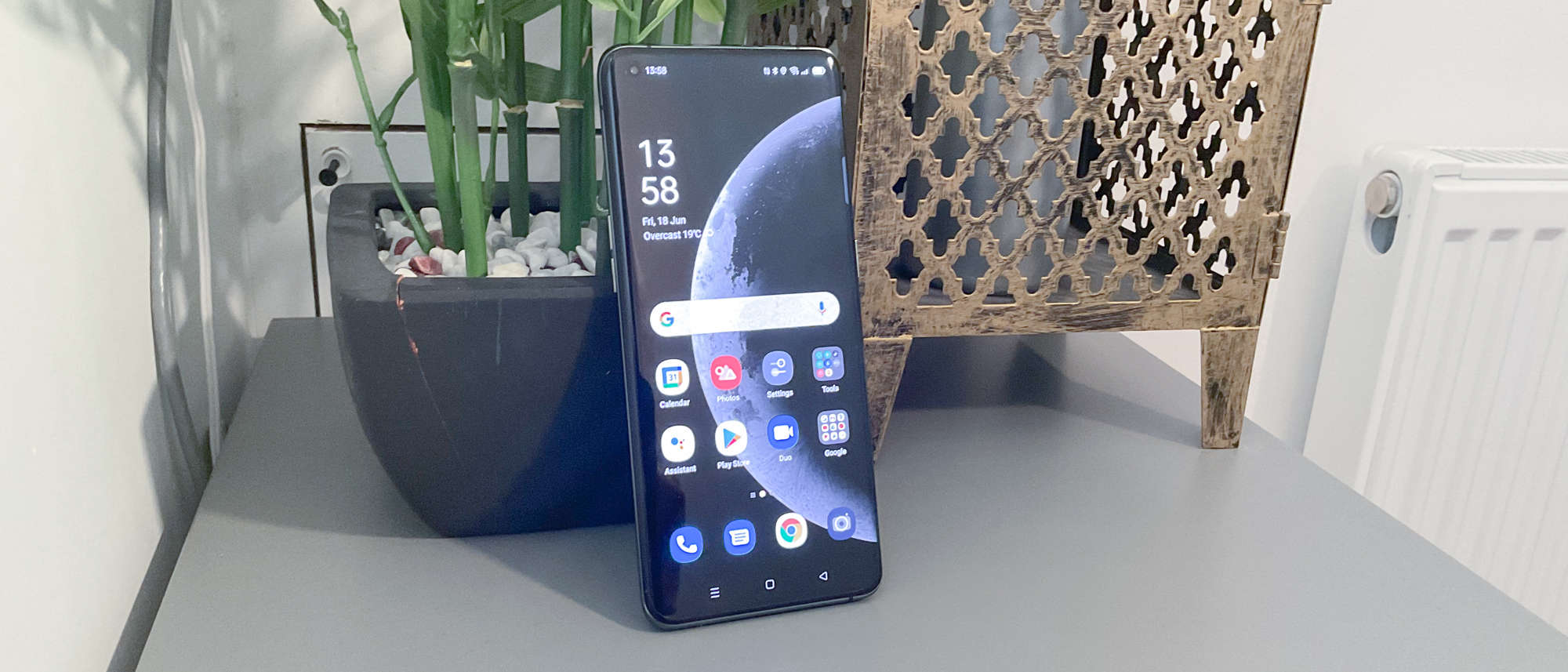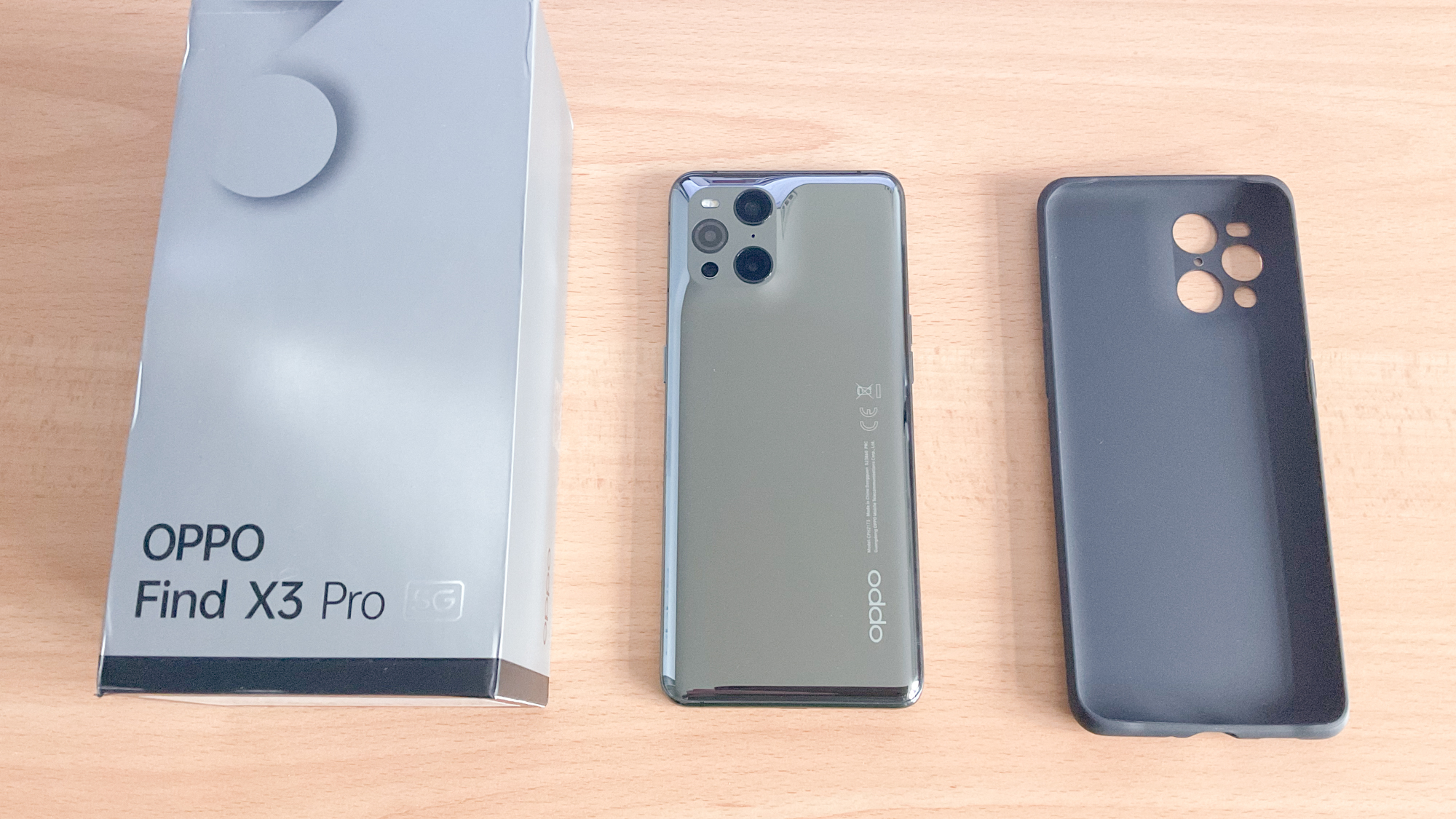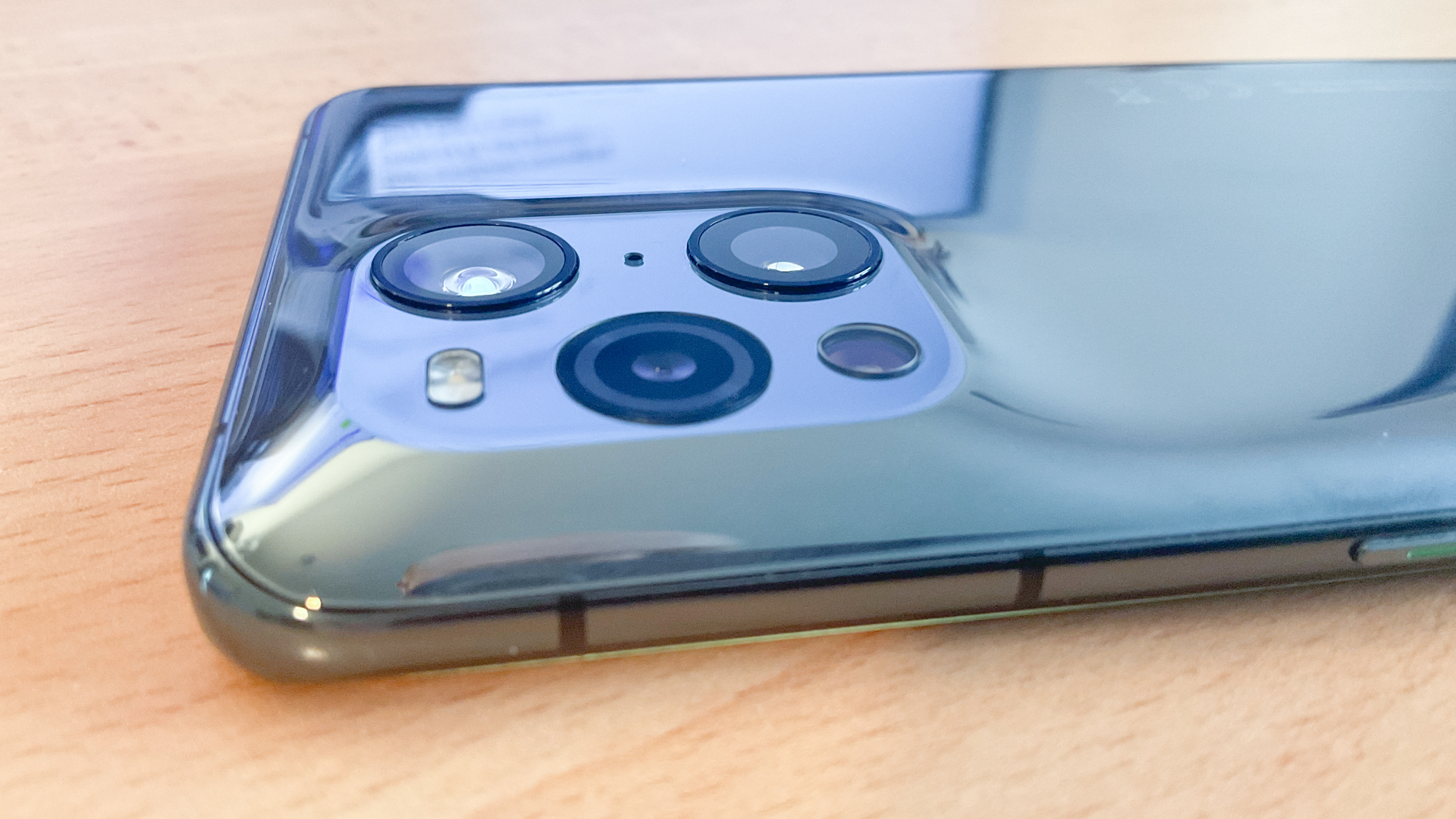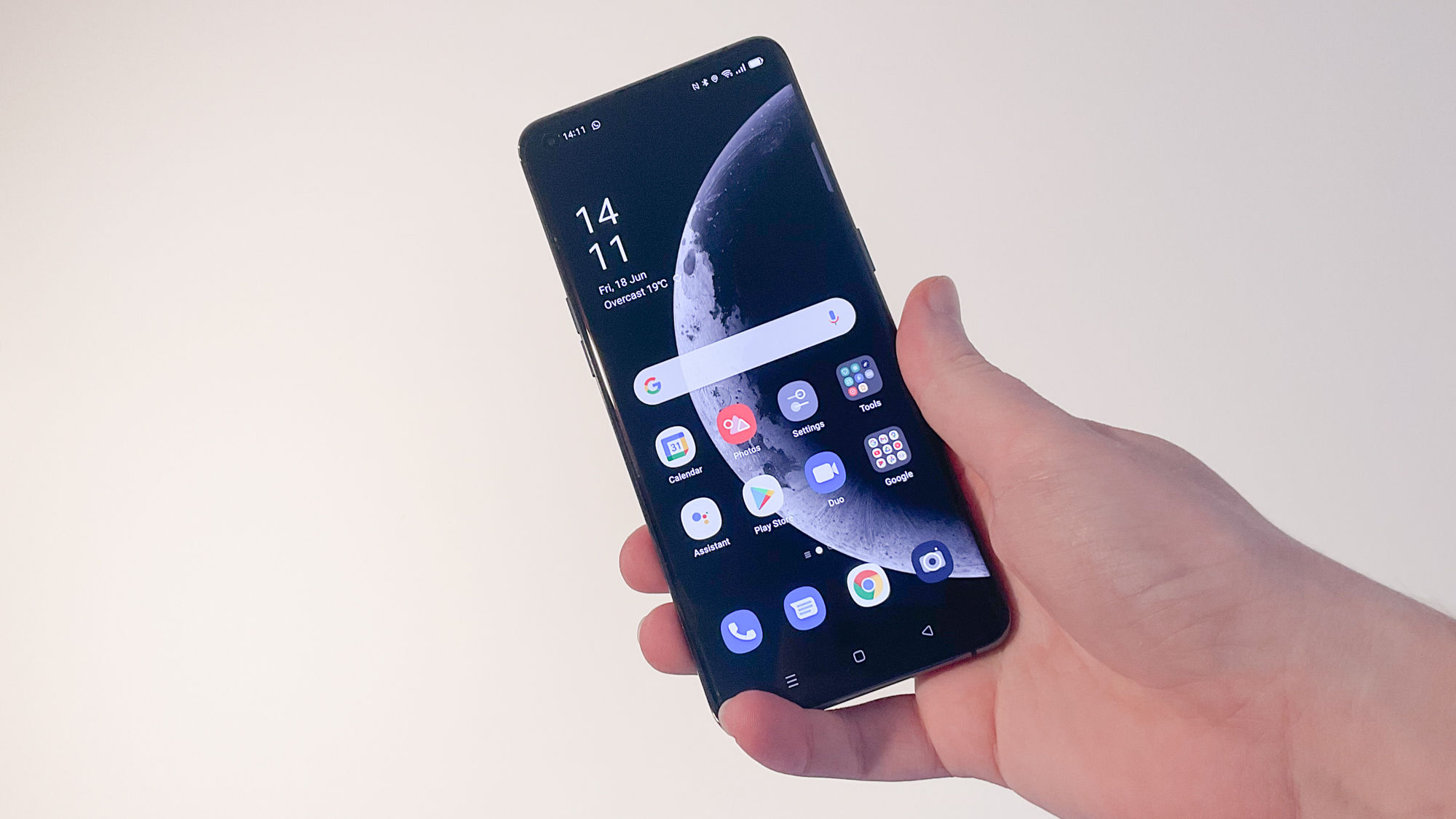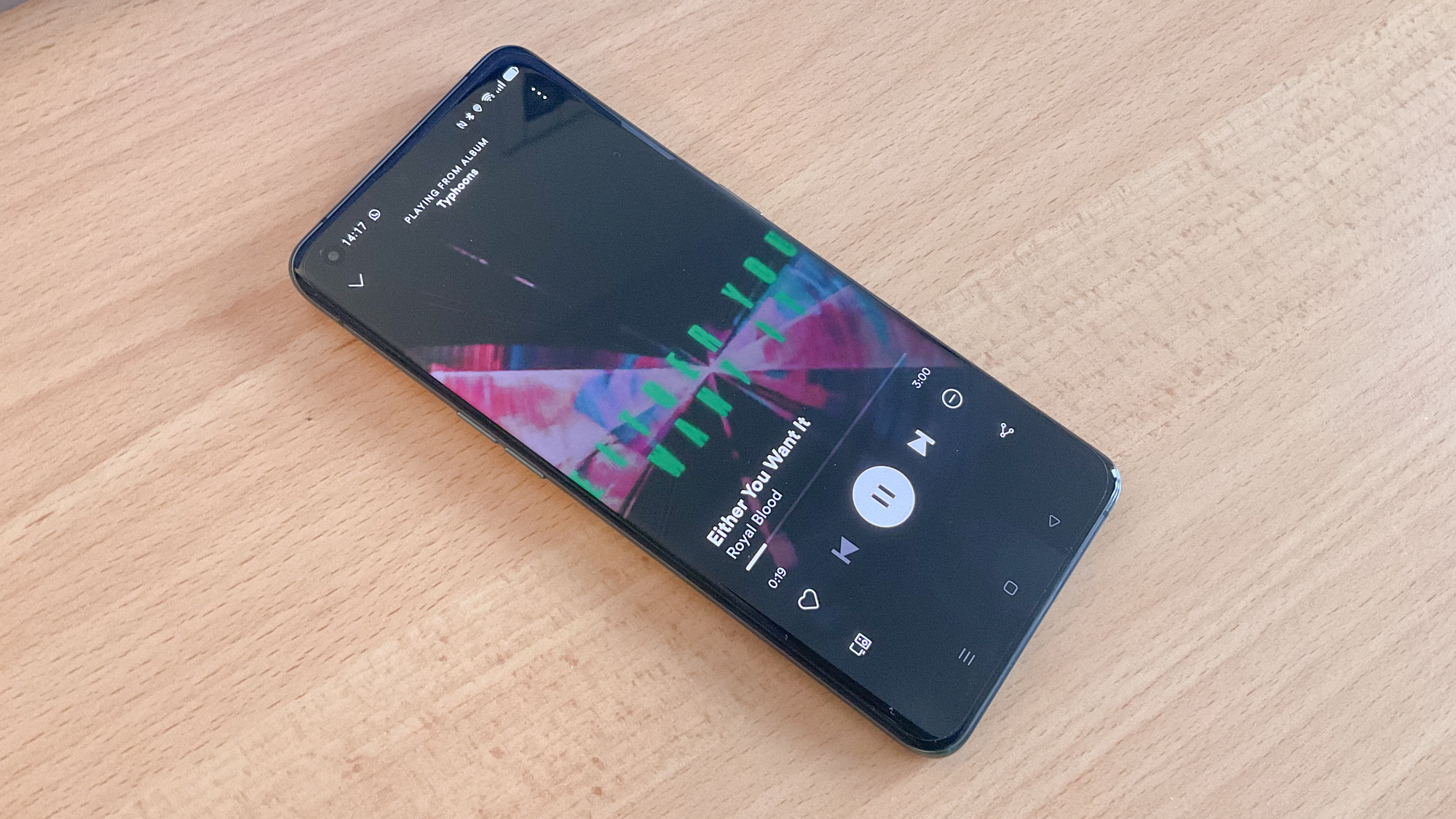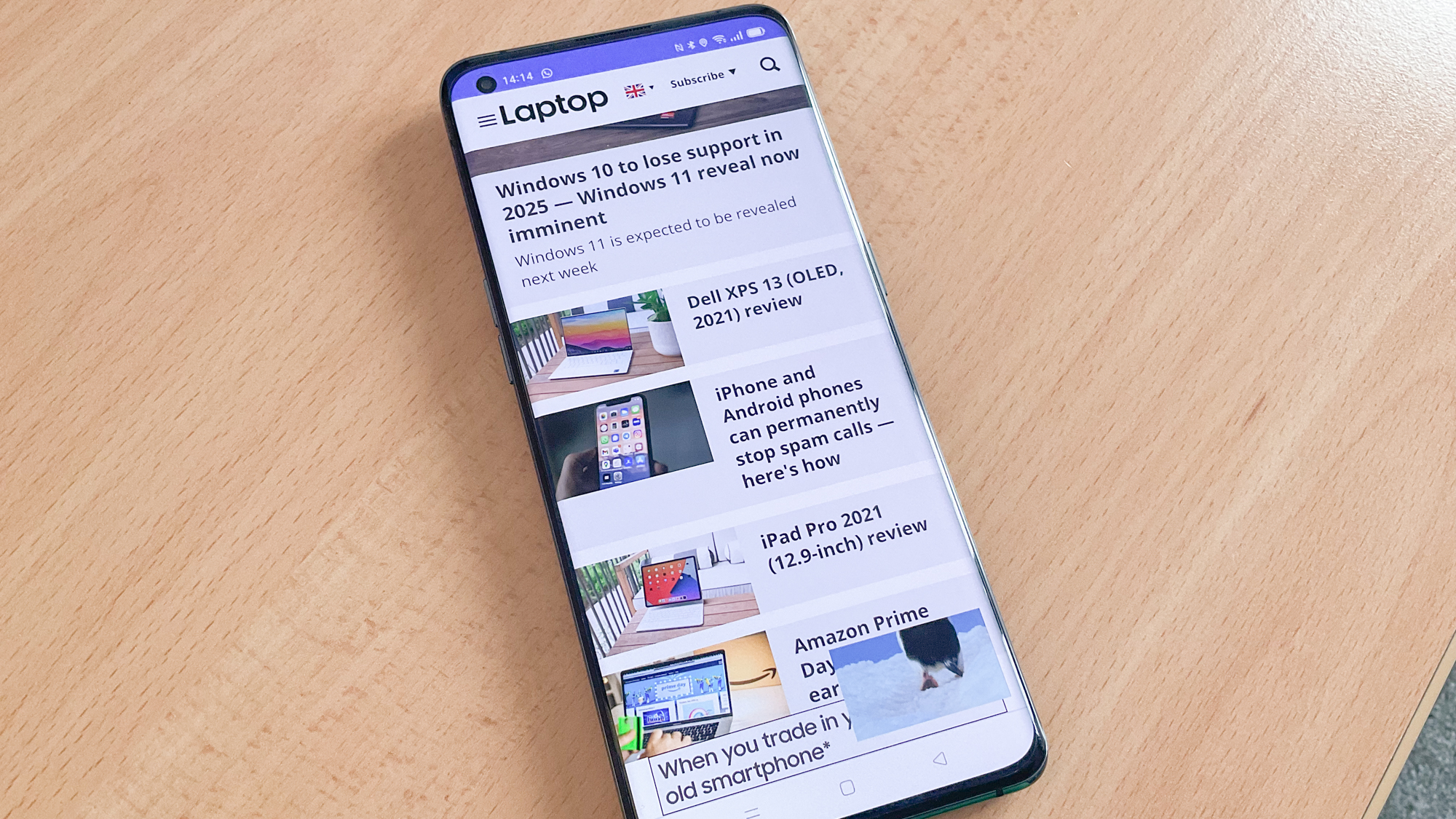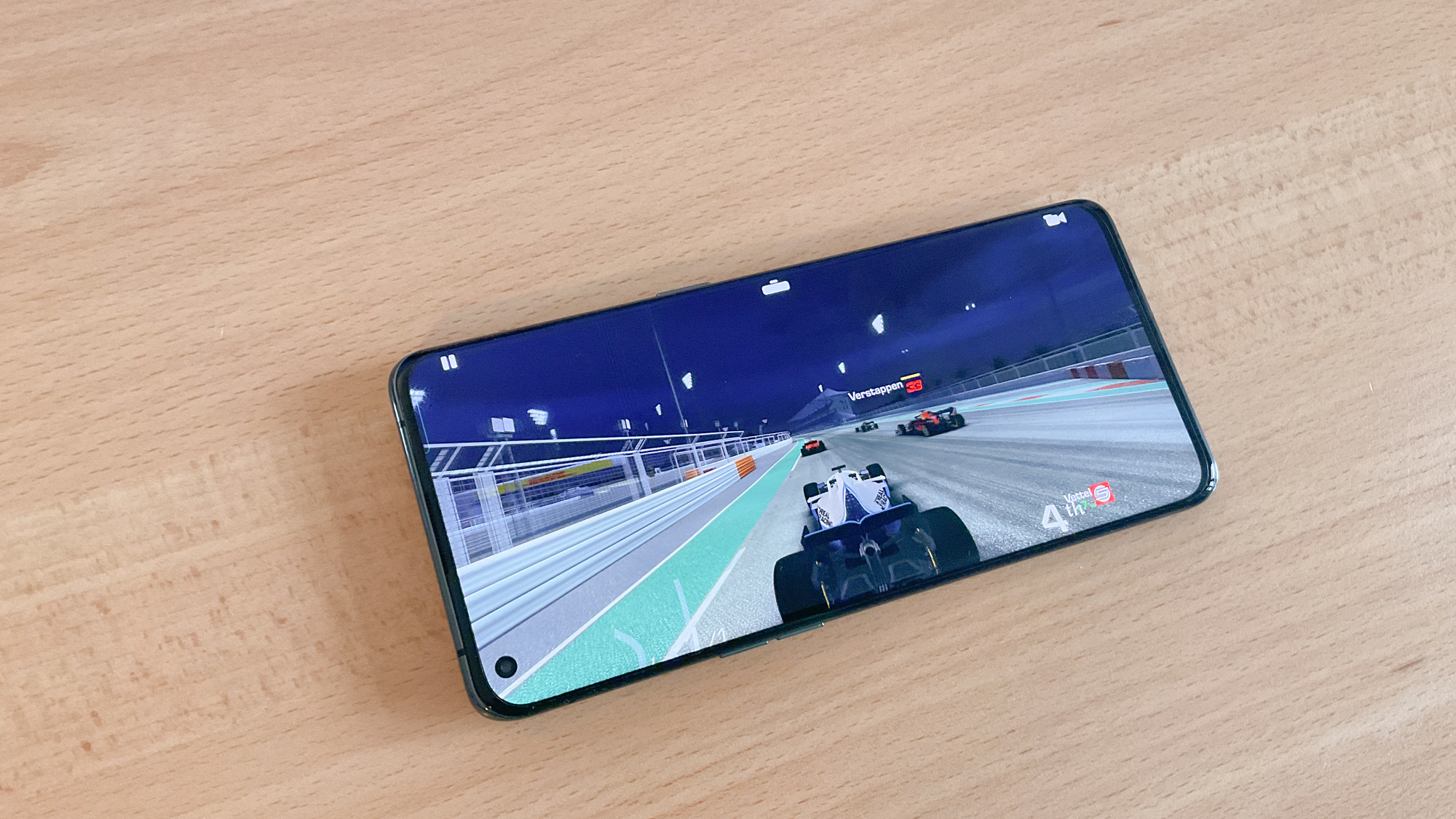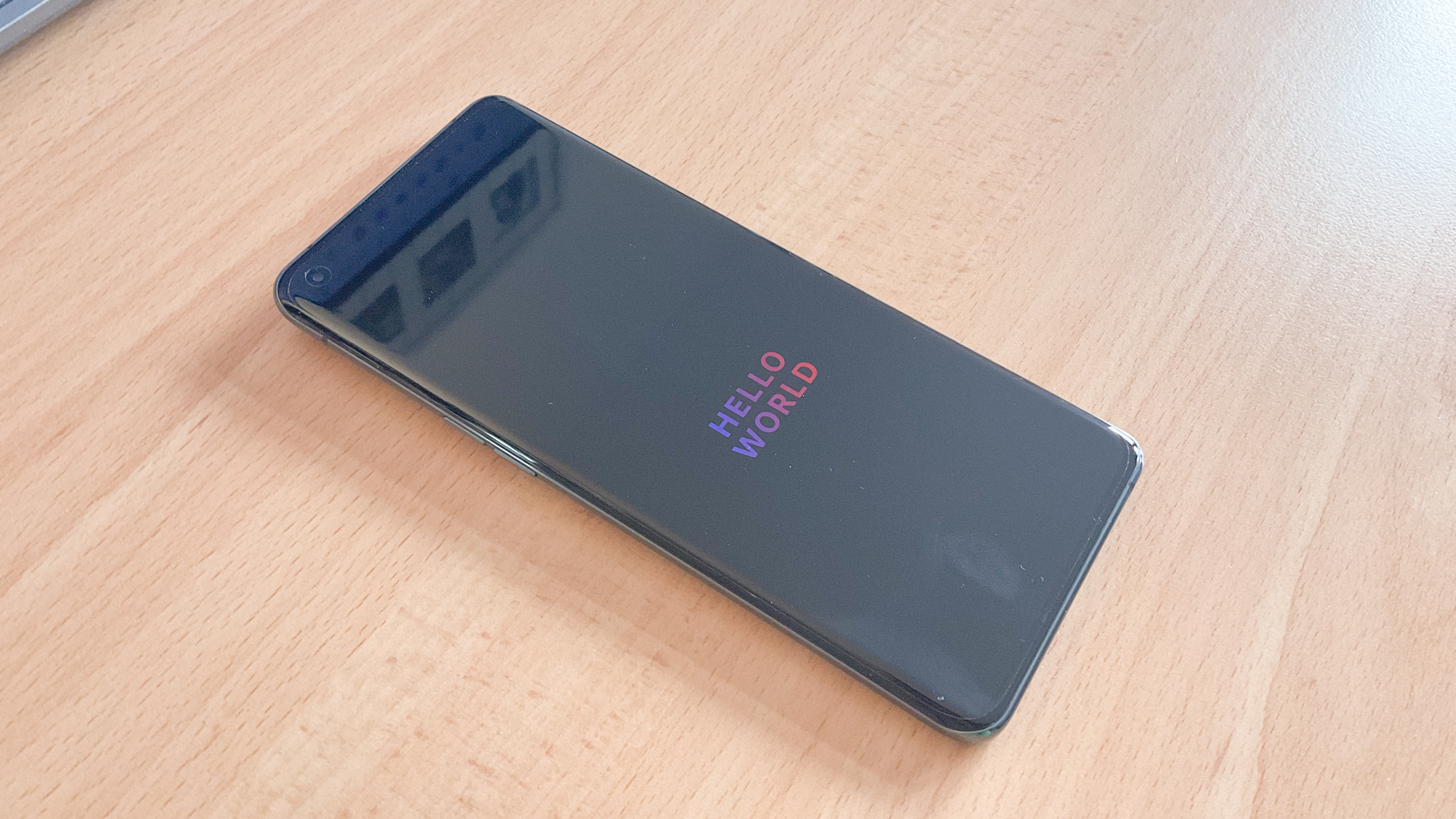Laptop Mag Verdict
The Oppo Find X3 Pro is a slick, high-end flagship phone with an extravagant price tag that won’t suit everyone’s tastes.
Pros
- +
All-round stellar performance
- +
Beautiful 120Hz display
- +
Excellent cameras
- +
Hugely customizable
Cons
- -
Premium price
- -
Two years of software support
Why you can trust Laptop Mag
Price: £1,099 (around $1,500)
OS: Android 11 / ColorOS 11.2
Display: 6.7-inch QHD AMOLED (3,216 x 1,440)
CPU: Qualcomm Snapdragon 888
RAM: 12GB
Rear cameras: 50MP wide (ƒ/1.8); 50MP ultrawide (ƒ/2.2); 13MP telephoto (ƒ/2.4); 3MP microlens (ƒ/3.0)
Front camera: 32MP (f/2.4)
Storage: 256GB
Battery: 9:50
Size: 6.4 x 2.9 x 0.32 inches
Weight: 6.81 ounces
Oppo is a well-established name in the smartphone industry these days, and there are good reasons behind the brand’s success not only in China, but around the globe. The Find X3 Pro is the embodiment of Oppo’s accomplishments in the phone industry.
A flagship smartphone through-and-through, Oppo’s Find X3 Pro delivers a jaw-dropping 120Hz AMOLED display panel, a pro camera setup, and powerful specs in a sleek frame. These high-end configurations can be seen as a delicacy in the realm of smartphones, making the Find X3 Pro the equivalent to caviar. Unfortunately, that metaphor works in more ways than one.
Like the salt-cured garnish, Oppo’s flagship smartphone is an expensive investment, and it’s not exactly easy to purchase seeing as it doesn’t sell in the United States. While the phone offers some impressive specs, many of the best smartphones on the market can outperform the Find X3 Pro at a much more affordable price. Still, sometimes the delicious taste of caviar is worth the trouble of getting it. Find out if the Find X3 Pro pleases your palate below.
Oppo Find X3 Pro price and configurations
The Find X3 Pro is one of the most expensive flagship smartphones in 2021. While we expect premium phones to come with a premium price tag, the Find X3 Pro’s exorbitant charge will put an unpleasant dent in your wallet.
Oppo’s flagship phone is available in the U.K. for £1,099, which is roughly $1,500 at this time of writing. There is only one configuration available with 12GB of RAM and 256GB of storage. The Find X3 Pro also launched with the budget Find X3 Lite and mid-tier Find X3 Neo, completing Oppo’s Find X3 line of smartphones. Seeing the Pro’s exorbitant cost, it would be nice to have other configurations available, such as one with 8GB of RAM and 128GB of storage.
To put this into perspective, the OnePlus 9 Pro with the same 12GB of RAM and 256GB of storage configurations is priced at $1,069 / £929, while the Asus ROG Phone 5 with 16GB of RAM and 256GB of storage costs $1,188 / £855. There’s premium, then there’s Find X3 Pro premium.
Oppo Find X3 Pro design
The Oppo Find X3 Pro is a mashup between two other notable flagship phones: The OnePlus 9 Pro and iPhone 12 Pro Max. Merging these titans of the smartphone industry sounds like the dream design, but in reality, the Find X3 Pro doesn’t stray far from the standard, minimalist frame we’ve come to expect from many Android phones.
Place the Find X3 Pro and OnePlus 9 Pro side-by-side and you’ll find that they are practically identical. With dimensions of 6.4 x 2.9 x 0.32 inches and 6.8 ounces, Oppo’s flagship smartphone is slightly lighter and thinner than the OnePlus 9 Pro (6.4 x 2.9 x 0.34 inches, 7 ounces). Its dimensions and weight try to match the iPhone 12 Pro Max (5.8 x 2.8 x 0.29-inches, 6.7 ounces), albeit with more height for the Find X3 Pro’s 6.7-inch display.
With a front-facing camera positioned at the top-left corner of the display, neatly curved edges, and both a USB Type-C and SIM card slot placed at the bottom of the phone, the Find X3 Pro would be virtually impossible to point out if thrown in a police lineup with the OnePlus 9 Pro. The crime? Identity theft. It is, however, distinguishable thanks to the separated volume control buttons along its left and the power button on the right.
Flip the Find X3 Pro to its rear and you’ll find iPhone 12 Pro Max influences. The camera bump, placed on the top-left corner, hosts a similar triangular pattern of lenses, with the difference being the reversed lens positions. Instead of the lens protruding, Oppo uses a fluid curve to streamline the camera bump with the rest of the glass back. The curves are reminiscent of a “spacecraft,” as Oppo puts it. While I never felt like I was breaking the atmosphere into space while holding the Find X3 Pro, the curved glass-back and edge make it a comfortable smartphone to hold. As an added bonus, the smartphone offers IP68 water and dust protection — a standard for many flagship smartphones.
That said, with the Gloss Black review model I received, I would never use the Find X3 Pro without a case. I enjoyed the mirror-like finish on the rear for all of two seconds before it became a canvas for smudges and fingerprints, so I quickly put on the rubber case that came with the unit. For those making the large investment for this smartphone, I strongly recommend going for the Blue color option with a matte finish.
The Find X3 Pro doesn’t break any design trends. Considering its manufacturing group, the BBK Electronics Corporation, it’s hardly a surprise that Oppo’s flagship phone looks identical to a OnePlus (which is also part of BBK). There isn’t a recognizable quality that will make someone say, “Hey, is that the new Oppo phone?”
Oppo Find X3 Pro display
The Oppo Find X3 Pro will dazzle anyone who navigates the web or watches videos through its stunning display — it’s the chef’s kiss.
Boasting a 6.7-inch, 3,216 x 1,440-pixel QHD+ AMOLED LTPO display, the Find X3 Pro offers an adaptive 120Hz refresh rate, varying between 5Hz up to 120Hz depending on the activity you are doing. This can save a tiny amount of battery compared to phones that offer a static 120Hz. No matter what I was doing, from watching Our Planet on Netflix to scrolling endlessly through Instagram, everything appeared as smooth as butter. There are also the options to conserve battery life by switching to the “Standard” 60Hz screen refresh rate and the FHD+ (2,412 x 1080) screen resolution. Once you’ve seen how splendid the display can look, however, I can never imagine myself making the switch.
Sign up to receive The Snapshot, a free special dispatch from Laptop Mag, in your inbox.
Refresh rate isn’t everything, and what makes Oppo’s Find X3 Pro truly pop is the vivid colors on display. Oppo claims its “1 billion color display” offers maximum color vibrancy with a spectrum of 1.07 billion colors. Along with support for HDR10+, I put these to the test by watching the aforementioned Our Planet on the default Vivid screen color mode.
Watching the breathtaking ice caps displayed in the Frozen Worlds episode was mesmerizing, while the faint yellow sunlight touching snow-ridden mountains in the background as penguins dipped into the freezing turquoise sea was stunning.
The Find X3 Pro also offers three other color modes: Gentle (71% NTSC/100% sRGB), Cinematic (97% NTSC/100% DCI-P3), and Brilliant (104% NTSC/100% DCI-P3). As it turns out, none of these hold a flame to its competitors, including the Samsung Galaxy S21 Plus (150.4% DCI-P3 coverage) and the OnePlus 9 Pro (147.4%). The Find X3 Pro also offers a Bright HDR video mode that automatically increases screen brightness when playing HDR videos. This is a nice touch, but the “Brilliant” color mode was more than enough.
In terms of nits of brightness, the Find X3 Pro offers up a whopping 800 nits. Impressive? Indeed, especially when compared with the Galaxy S21 Plus (747 nits) and the iPhone 12 Pro (743 nits).
When it comes down to it, the Oppo Find X3 Pro’s display offers spectacular color accuracy, a super-smooth refresh rate, and plentiful display modes to tweak to your heart’s content. What’s more, the Find X3 Pro has a unique “Full-Path Color Management System” which will stir some interest in photographers. This ensures whatever photo is taken, video recorded, or file downloaded doesn’t lose quality when being displayed on the smartphone. This means you can shoot, store and see in 10-bit color.
Oppo Find X3 Pro audio
Audio isn’t a key feature for the Find X3 Pro, and seeing as it ditches the 3.5mm headphone jack for a USB-C jack, your best bet is to find a pair of wireless headphones or earbuds.
Don’t get me wrong, though, as the Find X3 Pro still delivers some quality sound on its two speakers — one placed at the top and the other at the bottom — with Dolby Atmos. Playing Royal Blood’s “Typhoon,” I could rock out to everything from the guitar riffs to the smashing symbols without having to raise the volume over 50%. That said, there wasn’t any thumping bass of note, and none of the instruments, including Mike Kerr’s brilliant voice, ever stood out.
While the Find X3 Pro does offer further audio options such as a Sound Amplifier and Mono audio when using headphones, this is more for accessibility rather than improving audio quality when listening to music. Still, when it comes to audio, the Find X3 Pro delivers what you’d expect from a standard Android phone.
Oppo Find X3 Pro performance
With a Qualcomm Snapdragon 888 and 12GB of RAM, you better believe the Oppo Find X3 Pro is among the cream of the crop when it comes to smartphone performance.
During my testing, I never experienced any kind of lag or slowdown, which is expected of a high-spec smartphone. Having up to 70 tabs open in Google Chrome while watching a show on Netflix with multiple apps in the background (including Call of Duty Mobile) worked like a breeze, and meant I could easily switch back to recently opened apps and jump right back in with what I was doing.
The formidable chip and RAM are shown off better when gaming. The Find X3 Pro offers a Pro Gaming Mode to boost CPU and GPU performance, which allows for smooth gameplay when playing Call of Duty Mobile. With max graphics quality and frame rate, the phone didn’t heat up in the quick 5-minute matches I played. With the Google Play Store now offering 120 fps games, I also tried Real Racing 3 and was excited to finally see 120Hz in action on a smartphone. It’s the buttery-smooth refresh rate every gamer should enjoy.
When putting it to the test on Geekbench, you’ll find the Find X3 Pro blows some of its competition out of the park with a Geekbench 5 multi-core score of 3,371. This beats the Samsung Galaxy S21 Ultra (3,171) and the OnePlus 8 Pro (3,113). However, it doesn’t reach the heights of the OnePlus 9 Pro (3,685), Asus ROG Phone 5 (3,672), or the A14 Bionic powered iPhone 12 Pro (3,669). It doesn’t even beat the RealMe GT flagship killer (3,552). This is disappointing for a phone at this price, especially when compared to a sub-$1,000 option.
Oppo Find X3 Pro battery life and charging
The Oppo Find X3 Pro delivers decent battery life with its two series-connected battery cells, offering both 2,200 mAh and 2,250 mAh battery packs for a total capacity of 4,500mAh. While 5,000mAh seems to be all the rage these days, the Oppo lasted two days with light usage until the Find X3 Pro needed to be charged again. With the power-saving mode and super power-saving mode option, I could squeeze out up to five more hours on a battery at 14%.
With the provided 65W SuperVOOC charger included, I charged the phone from 0% to 100% in just 40 minutes. While Oppo claims it can charge up to 40% in 10 minutes, I found it to be more along the 15 to 20-minute mark. Still, that’s wicked fast.
The phone also supports up to 30W wireless charging, but it boasts an even better feature tucked away in the settings. Along with high performance mode to boost power and sleep standby mode to consume less power when sleeping, it also has “Optimised night charging.” This handy function controls the charging speed when plugged in overnight, so it charges up to 100% only when you wake up. This avoids overcharging and can save the phone’s battery life from degrading over the years.
During our battery test, which involves constant web browsing over 5G at 150 nits, the Oppo Find X3 lasted 9 hours and 50 minutes. This is a good result compared to Galaxy S21 Plus (9:42). But it trails behind the OnePlus 9 Pro (11:44).
Oppo Find X3 Pro cameras
The Find X3 Pro delivers stunning picture quality thanks to its four rear cameras and impressive selfie camera up front. You’ll find the main wide-angle and ultra-wide-angle cameras were made with Sony’s IMX 766 sensors, and they do an excellent job of capturing colors in a snap.
Oppo’s smartphone features a 50MP wide at ƒ/1.8; 50MP ultrawide at ƒ/2.2; 13MP telephoto at ƒ/2.4; and a 3MP microlens at ƒ/3.0 on the rear. That last one is for its special microscope mode, which can zoom in on surfaces with 60x magnification to get a close look at all the tiny grains and particles. I wouldn’t go as far as saying what I captured was microscopic. While it’s fun to get a leaf and examine it up close, I felt this was more of a gimmick than something I would use on a daily basis.
When taking snaps along my neighboring patch of countryside, I found the main snappers (both the main wide and ultra-wide angles) captured the most vivid and detailed pictures. Since both lenses offer 50MP, I captured detailed shots when the sun was shining. Camera enthusiasts will be delighted to know there is a full range of camera settings, too. In the “Pro” mode, I modified the ISO, shutter speed, white balance, and exposure compensation on the fly.
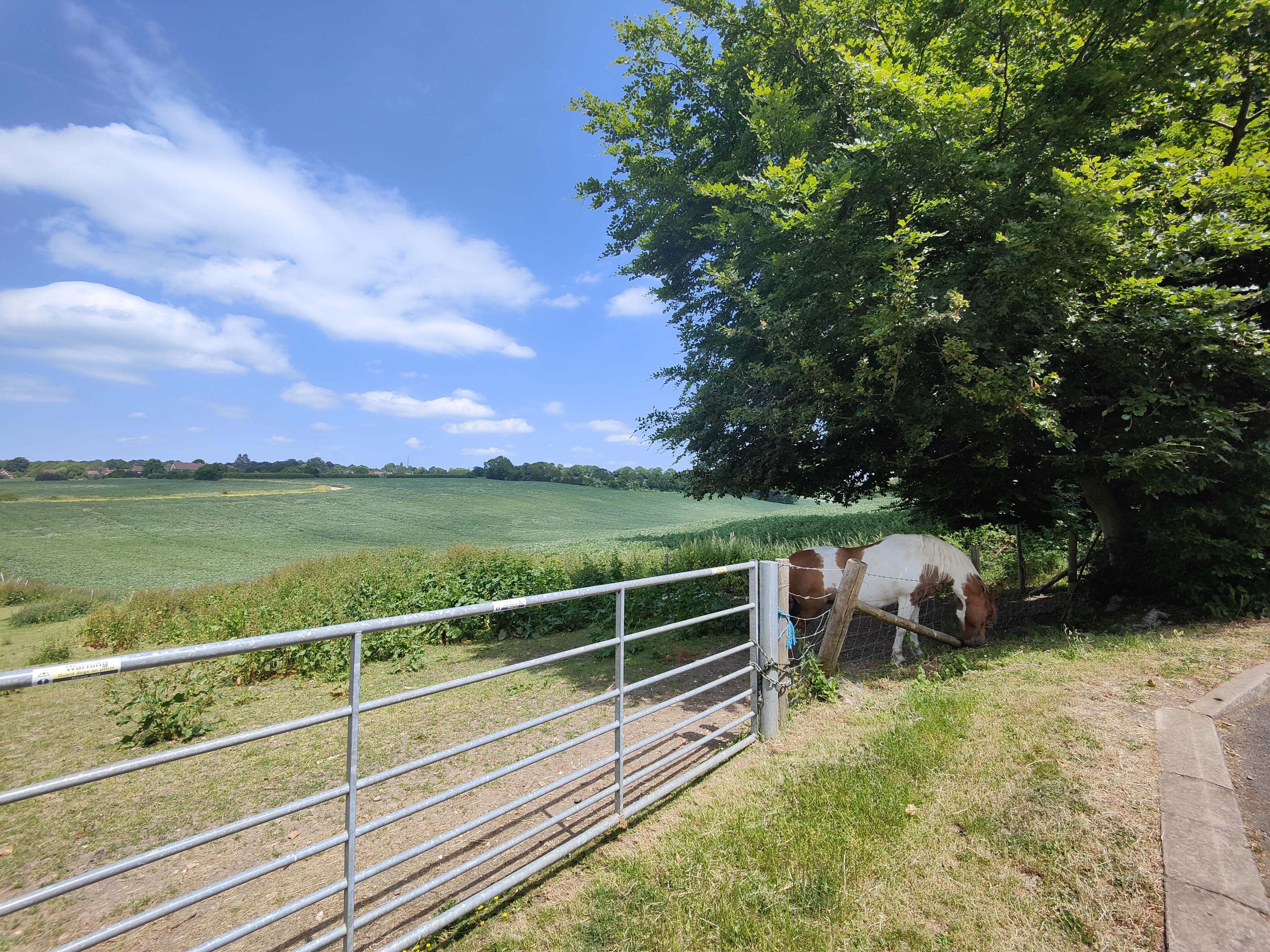
Oppo Find X3 Pro ultra-wide
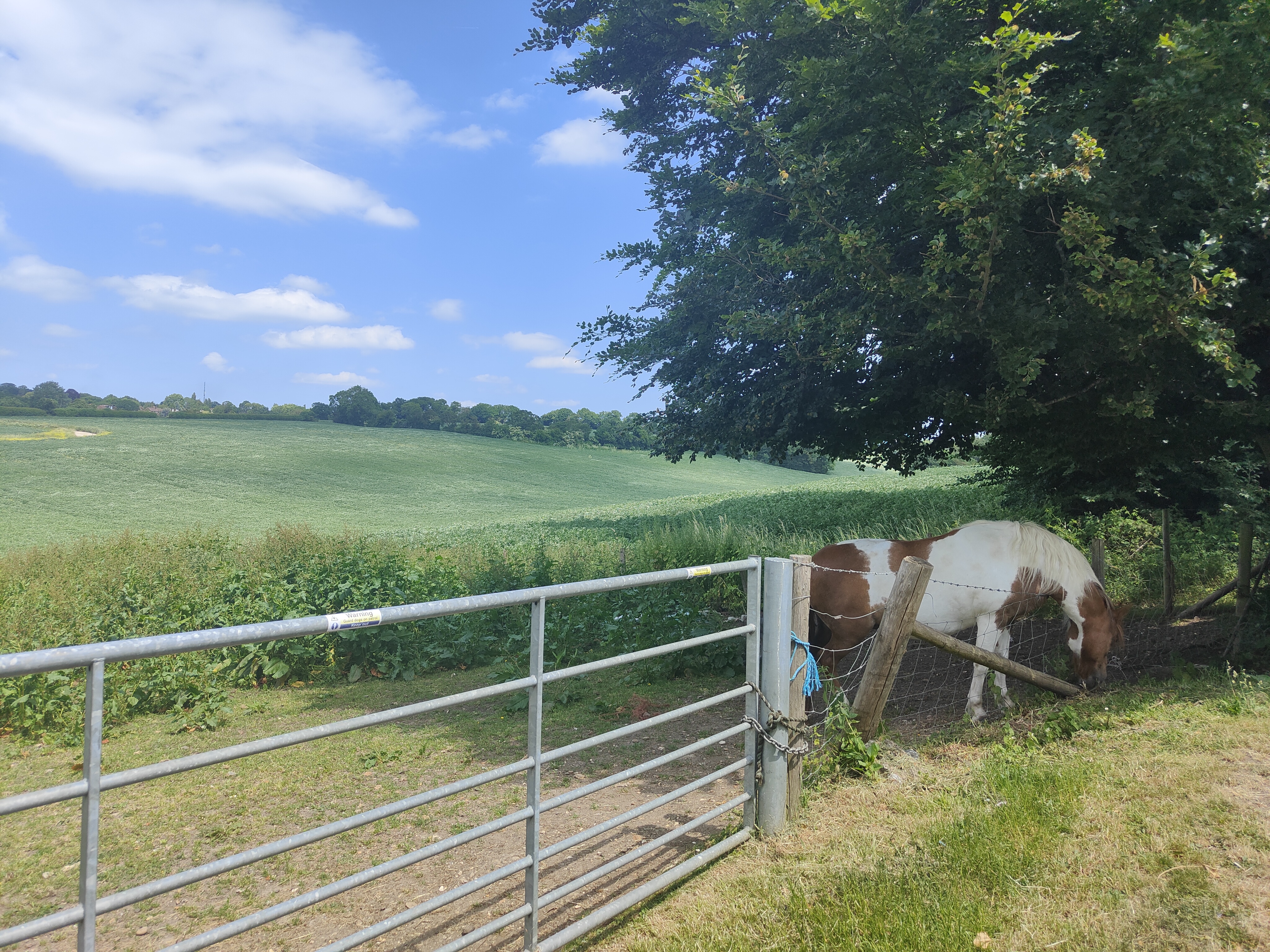
Oppo Find X3 Pro main

Oppo Find X3 Pro 2x zoom

Oppo Find X3 Pro 5x zoom
What’s more, for those looking to sharpen up their camera skills, there’s a full explanation of what each function does in a handy info menu. However, there is also AI scene enhancement for those who want the phone to do all the technical work.
While the Find X3 Pro’s wide and ultra-wide cameras captured some gorgeous snaps, the 13MP telephoto lens for zooming wasn’t as impressive as those on other smartphones, such as the Samsung Galaxy S21. The Find X3 Pro doesn’t sport a periscope lens, which allows for great zoom distances. Instead, the phone boasts up to 5x hybrid optical zoom. Photos were sharp at that range, however, once I used the 20x digital zoom, the pictures looked grainy.

Oppo Find X3 Pro ultra-wide
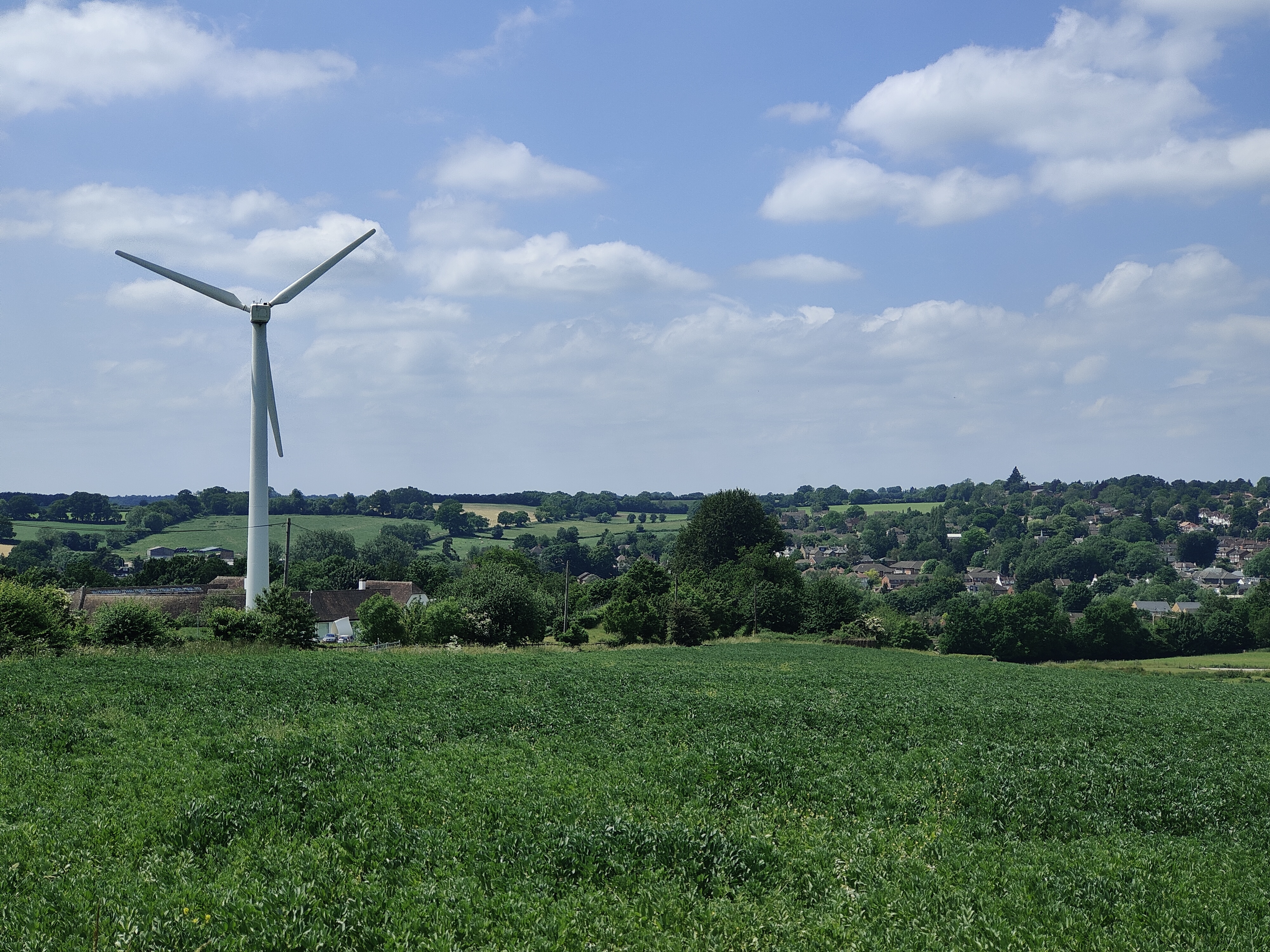
Oppo Find X3 Pro 2x zoom
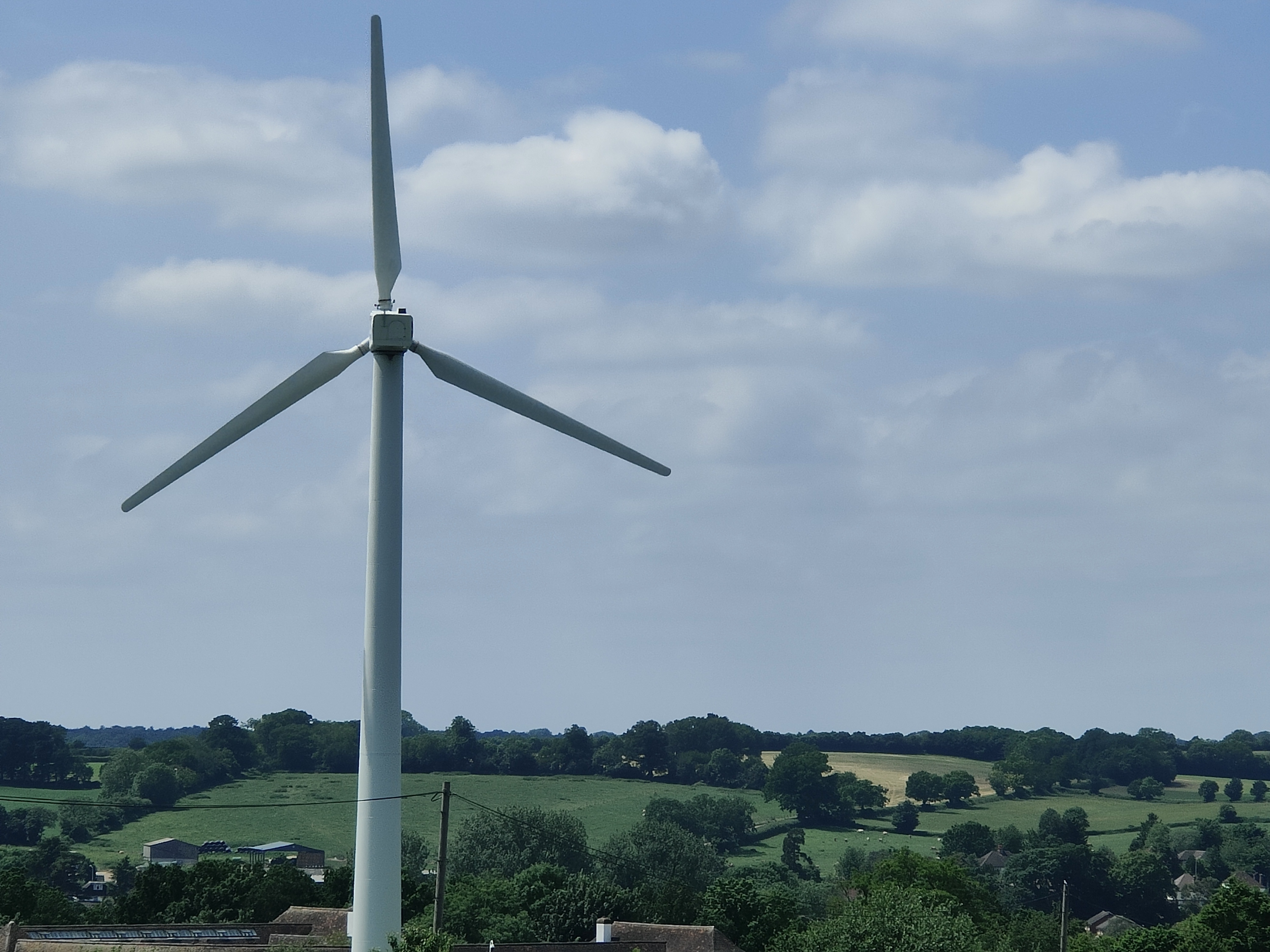
Oppo Find X3 Pro 5x zoom

Oppo Find X3 Pro 20x zoom
There is also a front-facing 32MP camera at ƒ/2.4. As a selfie camera, it captures oodles of details and different shades of light perfectly, suggesting it has a wide dynamic range. I never felt the need to tweak my face with the plentiful selfie settings Oppo provides, such as “bigger eyes” or “smaller nose” (they’re fun to mess around with, though).
Oppo also seems to have taken extra steps to provide better video recording features with the Find X3 Pro. The rear camera can shoot up to 4K at 60fps, while the front supports up to 1080p at 30fps. Along with its video slo-mo that can capture 240fps at 1080p, video stabilization and video zoom at 4K, there’s a nifty pro film mode that lets users get down to the nitty-gritty technical features of recording videos. For professionals shooting high-quality videos, this is a fantastic function.
Oppo Find X3 Pro software
Like many of the best Android brands, Oppo has its very own software overlay known as ColorOS 11.2. Android is known for its customization capabilities, but ColorOS offers a variety of flavors.
I adored the level of customization in the personalization setting, which allows you to change everything from the fingerprint sensor styles to adding live wallpapers including a colorful wisp effect every time a user touches the screen or a moon that turns when rotating the phone. Users can add any text they want to the always-on display, too. A personal favorite of mine is the edges of the screen lighting up in RGB effects each time I receive a notification. It’s the little things.
I spent a good 30 minutes tweaking widgets and app layouts, and ColorOS never stuttered or slowed down as I easily navigated through all the menus. You’ll also find the face sensor and fingerprint scanner works without breaking a sweat — immediately recognizing me and unlocking the phone. Of course, I could switch all this off if I wasn’t worried about my privacy. Speaking of, the phone also sports its own privacy system, offering advanced app locks and a permission manager for various files.
While Oppo’s ColorOS 11.2 works like a dream, the software support does not. Oppo will support two years of software and security updates. That isn’t good enough at this price. While this may be the standard for many flagship smartphones, this can’t match the constant iOS updates still arriving on older iPhone models (iOS 15 is coming to the iPhone 6S). New smartphones come out every year, but I can’t imagine the majority of smartphone enthusiasts opting for a £1,100/$1,500 phone that may die in two years.
Bottom line
The Oppo Find X3 Pro isn’t an easy smartphone to recommend. With all that Oppo’s flagship does right, including its brilliant display, plentiful customization settings, and excellent cameras, its expensive price tag will turn many people away who will look for a more affordable flagship with similar specs.
However, the Find X3 Pro does a brilliant job at offering premium features in a thin and beautiful handheld device, especially when its bright and vivid display is on. If you’re not a fan of caviar but on the hunt for a similar tasting dish, look no further than the OnePlus 9 Pro.

Darragh Murphy is fascinated by all things bizarre, which usually leads to assorted coverage varying from washing machines designed for AirPods to the mischievous world of cyberattacks. Whether it's connecting Scar from The Lion King to two-factor authentication or turning his love for gadgets into a fabricated rap battle from 8 Mile, he believes there’s always a quirky spin to be made. With a Master’s degree in Magazine Journalism from The University of Sheffield, along with short stints at Kerrang! and Exposed Magazine, Darragh started his career writing about the tech industry at Time Out Dubai and ShortList Dubai, covering everything from the latest iPhone models and Huawei laptops to massive Esports events in the Middle East. Now, he can be found proudly diving into gaming, gadgets, and letting readers know the joys of docking stations for Laptop Mag.
